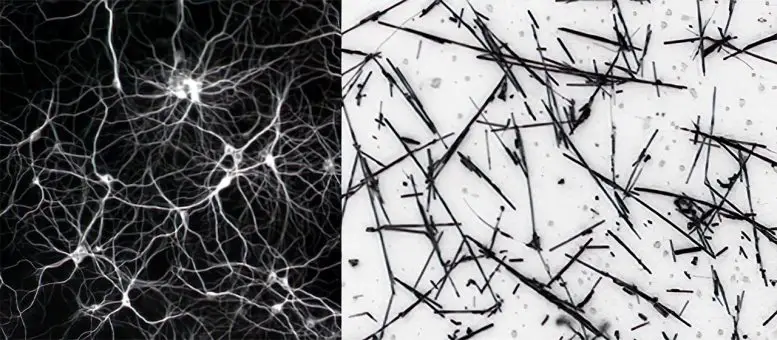
Scientists at the University of Sydney have led an international team to demonstrate how nanowire networks can function like the human brain. In a move that could revolutionise the replication of brain-like memory and learn in non-biological systems, the scientists successfully showed how nanowire networks can possess short-term and long-term memory like the human brain.
Led by Dr Alon Loeffler, the researchers published the study in the journal Science Advances on Monday, April 24, 2023. The scientists had previously exhibited how nanotechnology could help build a brain-like electrical device with neural network-like circuitry and synapse-like signalling.
“Our current work paves the way towards replicating brain-like learning and memory in non-biological hardware systems and suggests that the underlying nature of brain-like intelligence may be physical”
Lead Researcher, Dr Alon Loeffler
What are nanowire networks?
Nanowire networks are a type of nanotechnology from highly conductive silver wires that behave like the networked physical structure of a human brain. Also, the wires are enclosed in a plastic material and scattered across in a mesh-like fashion.
“The nanowire network is like a synthetic neural network because the nanowires act like neurons, and the places where they connect are analogous to synapses”
Senior Author Professor Zdenka Kuncic from the School of Physics
The researchers manipulated the end electrodes’ voltages to change the networks’ pathways. When the team implemented this change, they found that the memory of the network had much higher accuracy and did not decrease over time. This suggests they have found a way to strengthen the pathways to push them towards where they want them, and then the network remembers it
The team tested the nanowire network by conducting the N-Back task, a common memory task in human psychology experiments. The task requires a person to remember a specific image of a cat from an array of feline images in a sequence. Generally, the average N-Back score for humans is 7, meaning a person can identify the same image from seven steps back.
Nanowire network exhibited human-like memory
The researchers discovered that the nanowire network could remember the specific endpoint in an electric circuit seven steps back, suggesting an N-Back score of 7. The team found that the nanowire network could store up to seven items in memory without reinforcement training in the N-Back test. Also, it recorded a near-perfect accuracy with reinforcement training.
“When we implement that(change of the pathways), its memory had much higher accuracy and didn’t decrease over time, suggesting that we’ve found a way to strengthen the pathways to push them towards where we want them, and then the network remembers it.”
Lead Researcher, Dr Alon Loeffler on the methodology of the study
Loeffler explained that constant reinforcement of the nanowire network leads to a point where the reinforcement is not needed anymore. This is because of the consolidation of the information into memory. He stressed this is the difference between the short-term and long-term memories. According to Loeffler, training the brain helps consolidate information we want to remember for a long time. If not, the information fades away with time.
The advancement in nanowire network technology could have real-world applications in robotics and sensor devices. The researchers believe this technology could lead to the replication of brain-like memory and learning in non-biological systems, which could have far-reaching implications for various fields.
Phot credits: Loeffler et al



